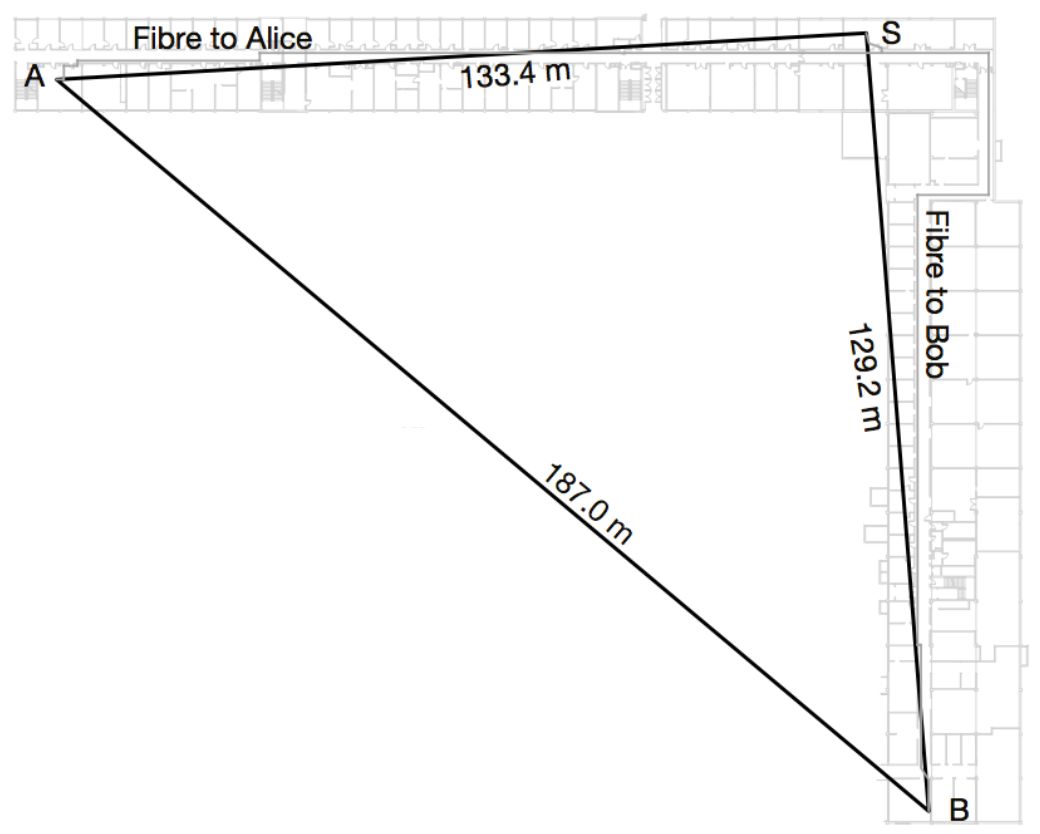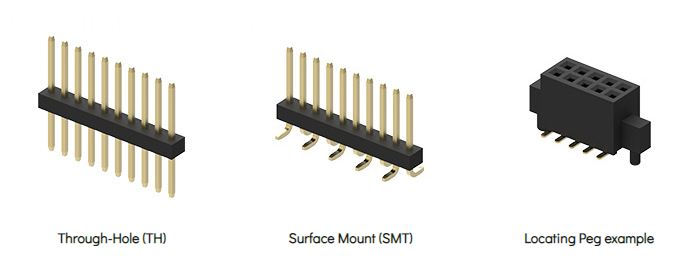
In modern cryptographic encryption methods, a large number of random, unpredictable numbers are used to ensure the security of data and information. Therefore, a reliable random number generator is crucial to the encryption system. Scientists have been trying to build better random number generators, and one of the major challenges is that - it is difficult to determine whether the random number output by the generator is truly unpredictable.
The reason why hundreds of millions of times each day are used to encrypt random numbers of data in electronic networks is not absolutely random because they are all generated by software formulas or physical devices. “Random†output is subject to the defects of the device itself, components The effects of ageing, unexpected failures, or opponent tampering deprive the random number generator from its intended design, resulting in undiscovered deviations. Although some statistical tests can be used to perform inspections, statistical testing of the output alone does not ensure that the output is unpredictable, especially if the device is tampered with by an adversary.
That is, the internal workings of the output generation are unknown. For example, some arithmetic operations known as pseudo-random sequence generators produce completely predictable sequences of numbers; but these sequences also do not have any recognizable rules, so for those who never know how these numbers were generated, It is difficult to distinguish these digital sequences generated by pseudo-random processes from sequences obtained by truly random methods.
This is why, a few years ago, the team of physicist Peter Bierhorst of the National Institute of Standards and Technology (NIST) decided to develop a completely random digital generator. In the field of cryptography, this means complete "unpredictability" of numbers. And what is true randomness? It is quantum mechanics.
Bierhorst's et al. achieved unprecedented security by using random number generators developed in quantum physics and special relativity. They published the experimental details in the April 12 issue of Nature, and the techniques used in the experiment surpassed all previous methods to ensure the unpredictability of random numbers.
The new method uses photons to generate digital bits (photons oriented in one direction are 1 and photons in the other direction are 0). This experiment has exactly witnessed the "ghost-like superposition effect." In the experiment, the researchers processed these "ghostly" outputs to verify and quantify the randomness available in the data and generate a more random series of digits.
The lasers, mirrors and lenses used in the experimental prototype system were placed in three different laboratories, two of which were located at the ends of an L-shaped building. The entire device is connected in series with about 263 meters of optical fiber. Bierhorst said: “It is difficult to guarantee whether a classical information source is really unpredictable, but the sources and protocols of quantum information are like a security protection. We are sure that no one can predict our numbers.â€

â—‹ The relative positions of the three laboratories where the source (S) and the measuring stations (A) and (B) are located: In each experiment, the source laboratory will generate a pair of non-polarized entangled photons, respectively. Send to Labs A and B for measurements. | Photo credit: Bierhorst et. al.
Bierhorst explained: “Throwing a coin may seem like a random process, but once you can see the exact path of the coin, you can predict its outcome. And quantum randomness is truly random, and we can see the quantum Randomness is because only quantum systems can produce statistical correlations between measurement choices and results."
This is because even if you can repeat a quantum experiment by preparing a quantum particle with exactly the same initial state, it is possible to obtain completely different results if it is measured under exactly the same conditions. This is different from tossing a coin - because when tossing a coin, the power of the thumb and the direction of the wind are the initial conditions that determine the outcome before landing. The result of "throwing" a tiny quantum particle is that it will exist in probability only at the moment it "falls." Therefore, electrons, photons, and atoms are indeed random.
Quantum mechanics provides a good source of randomness because the measurement of some quantum particles (existing "stacks" of 0s and 1s) has fundamentally unpredictable results. Researchers can easily measure quantum systems, but it is difficult to prove that measurements are formed by quantum systems rather than disguised by classical systems.
In the NIST experiment, the researchers observed the strange quantum correlations between pairs of photons when they closed loopholes that may have led to non-random digits appearing to be "random." The operating principle of the experiment is that the researchers will first prepare two photons in the entangled state, and then send each photon to a different remote measurement station and record the polarization of the photon at the measurement station. During the measurement process, because the two measurement stations are too far apart, photons cannot interact unless the signal travels faster than the speed of light. However, due to the entangled nature of photons, the resulting measurements are strongly correlated. This correlation can be detected by statistical criteria known as violation of Bell's inequality.
The strong correlation between two distant photons indicates that they can be used as super-light communication devices. This is indeed possible, unless the measurement of the photon is completely unpredictable, because this situation will result in a messy and difficult to decipher message. Any attempt to use this photon in a communication device will fail. However, because communication faster than the speed of light is not possible, violation of the Bell inequality means random measurement output. That is, this violation provides an experimental sign of randomness.
In fact, scientists have observed violations of the Bell inequality in many experiments and have been aware of their relationship with randomness. But the quantum information researchers have begun to develop tools that can use this connection only in recent years.
A key difficulty in the Bell test is that most of the experiments that violate Bell's inequality will be affected by vulnerabilities, which means that they cannot be considered as black box demonstrations. In the past few years, although no loophole experiments have been carried out, they still have great technical challenges. In particular, the magnitude of violation of the Bell's inequality observed in these experiments, while sufficient to confirm photon-related behavior, is too low to justify the existence of randomness for cryptographic purposes.
Bierhorst et al. modified the existing non-vulnerability experimental device to make this randomness possible. But this threshold is almost impossible to achieve. Every time a photon is measured in an experiment, the resulting randomness (bits represented by 0 and 1) is equivalent to throwing a coin with a probability of 99.98% on the ground.
Through many runs, the sequence of measurement results should accumulate enough uncertainty to allow truly random bits to be "extracted" by clever post-processing. However, existing methods for analyzing these sequences are insufficient to achieve this goal. Therefore, Bierhorst and his team developed a powerful statistical technique for observed violations of weak Bell inequalities: they can generate 1024 random bits in approximately 10 minutes of data acquisition, which is equivalent to 55 million. Photon pairs were measured.
Bierhorst said: "Perfect coin throwing is balanced. We made 1024 almost perfectly balanced bits. The probability of each being 0 or 1 is very close." Other researchers previously used Bell tests to generate random numbers, but NIST The method is the first method to use the unbound Bell test and extract the resulting data.
For Bierhorst, the random number generator developed by quantum mechanics is not only a practical tool, but the tests he conducted further prove that the quantum particles really have a strange probability and cannot be determined in advance. It is gratifying to know that this universe is really random. And now, we may be able to use this randomness to strengthen information security in the digital age.
Antenk manufactures a wide range of application specific board stacking connectors which were designed and built to specific customer requirements. Our experienced staff has developed custom products in a variety of contact styles, pitches and stacking heights. Our designs range from new concepts to duplicating existing market products identically or with improvements. Many desigsn are produced using automated manufacturing processes to increase reliability and provide significant cost savings
Board to Board Connector
Board-to-board (BTB) connectors as the name indicates is used for connecting circuits board together. This kind of connectors are suitable for stacking circuits boards one over another. Flat flexible cables can be avoided using these kinds of connectors; moreover it makes the entire unit more compact. The commonly used BTB connectors are SMT connectors and Berg Strip. We will discuss about them in detail in the following section.
SMT CONNECTOR
Surface Mount Technology (SMT) connector is a commonly found board-to-board connector in advanced circuit boards. As the name indicates this connector is available only in surface mount model. It is carefully mounted on to the solder pads on the surface of the PCB.
SMT connectors are ideal candidate for miniaturization due to their small area of occupancy and stacking height. They are suitable for double layered or multilayered PCBs. They are designed for high performance and reliability.
They commonly found in advanced circuit boards in networking equipment, telephones, mobile phones, computers and other consumer electronics.
Board-to-board (BTB) connectors are used to connect printed circuit boards (PCB), electronic components that contain a conductive pattern printed on the surface of the insulating base in an accurate and repeatable manner. Each terminal on a BTB connector is connected to a PCB. A BTB connector includes housing and a specific number of terminals. The terminal is made from a conductive material (mostly copper alloy), and plated to improve conductivity and antirust. Terminals transmit the current/signal between PCBs connected by BTB; the housing is made of insulating material (mostly plastic).
The basic types of Board to Board Connector
Broadly speaking, board to board connectors are manufactured in the following types:
Pin Header
Elevated Pin Header
Socket
Elevated Socket
Shrouded Header
Box Header

The way mount Board to Board Connectors on a PCB
board to board connectors are available in through hole (TH) and Surface Mount (SMT) variants.
Locating pegs (also referred to as locating posts, alignment pins or board locks) are used to assist alignment of connectors to the PCB. Locating pegs are particularly useful when using surface mount components.

board to board connectors are available in the following pitches: 04mm/0.5mm/0.8mm/1.0mm/1.27mm/2.54mm/3.96mm/4.0mm
For experienced hardware designers choosing board to board connectors is second nature, for the uninitiated it can be daunting. We offer design support and will help guide you through the options available. If you need help with your board to board connector design, contact antenk. Where required antenk also offer non standard pitches.

0.4mm Board To Board Connectors,0.5mm Female Board To Board Connector,0.8mm 1.0 mmPcb Board To Board Connector,Board To Board Terminal Connectors
ShenZhen Antenk Electronics Co,Ltd , https://www.antenkcon.com